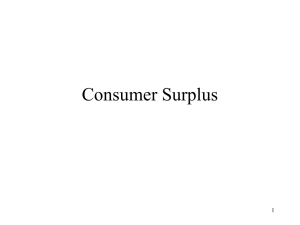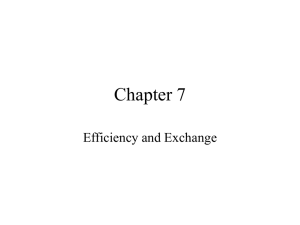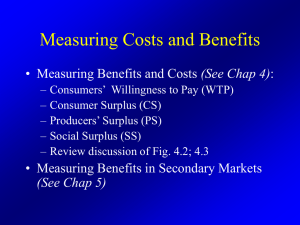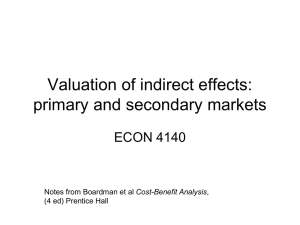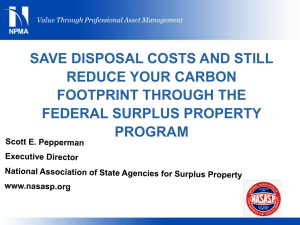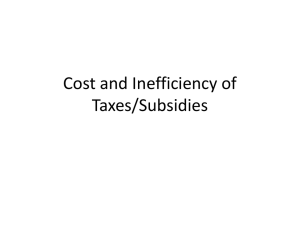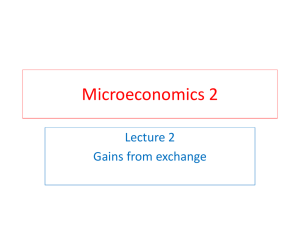Consumer Surplus
advertisement
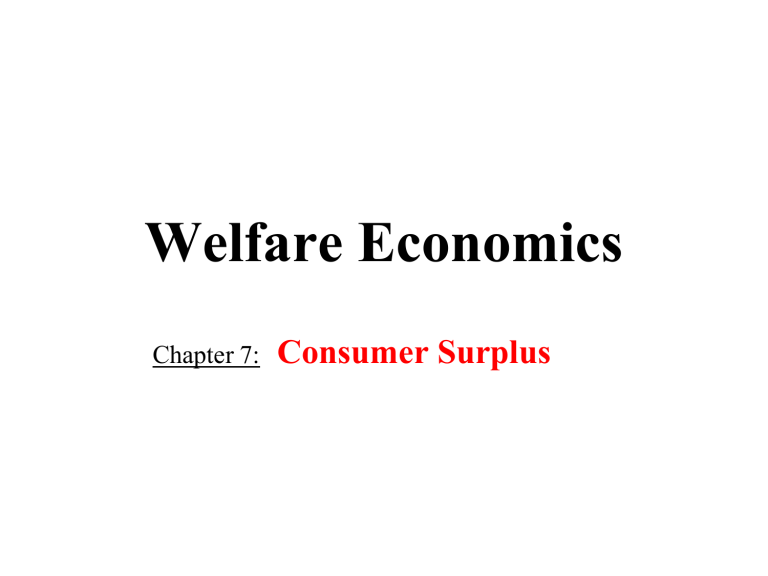
Welfare Economics Chapter 7: Consumer Surplus Welfare Economics Welfare Economics is the study of whether a market allocation is socially desirable • Market equilibrium maximizes total welfare for society unless there is a market failure (i.e. externalities, price fixing, etc…) S1 -------------- E1 ------------- P1 Q1 S = Marginal Cost (MC) MB = MC so Total Welfare is maximized D = Marginal Benefit (MB) D1 Qty • Consumer surplus- measures welfare for the buyer • Producer surplus- measures welfare for the seller • Total Welfare = Consumer Surplus + Producer Surplus CONSUMER SURPLUS • Willingness to pay- the maximum price a consumer would pay – how much a consumer values a good/service – called the marginal benefit (MB) -------------- E1 ------------- P1 S1 Q1 D1 Qty • Consumer Surplus- buyer’s willingness to pay minus price paid – CS = MB – Price Paid Demand Schedule & the Demand Curve The market demand curve depicts the quantity buyers are willing to pay at each price Consumers value goods differently The demand curve is essentially a marginal benefit curve Demand Curve Price of Album John’s willingness to pay $100 Paul’s willingness to pay 80 George’s willingness to pay 70 Ringo’s willingness to pay 50 Demand or Marginal Benefit 0 1 2 3 4 Quantity of Albums Equilibrium Price = $70 Price of Album $100 John’s consumer surplus ($30) The area below the demand curve & above the price measures the consumer surplus in the market. 80 Paul’s consumer surplus ($10) 70 As Price ↓ => Consumer Surplus ↑ Total 50 consumer surplus ($40) Demand 0 1 2 3 4 Quantity of Albums Equilibrium Price & Consumer Surplus Price 200 A This triangle represents the “welfare” of all consumers at a market price of $100 Consumer Surplus 100 B Total Consumer Surplus = $10 C ½ * 1 * 20 = $10 D1 = MB1 0 20 Quantity [½ b * h] Consumer Surplus Handout • Please complete Consumer Surplus worksheet Sample Problem 1) Calculate the initial consumer surplus at equilibrium price of $300 Price 500 A 2) Calculate the change in consumer surplus when price falls to $100 3) After the price decreases from $300 to $100 a) what gain is for old consumers (people who also bought when price = $300) b) what gain in consumer surplus is for new consumers ----------------- ----- 0 E1 -------------------- 30 50 100 ---------------------------------- 100 0 E2 D1 Quantity


